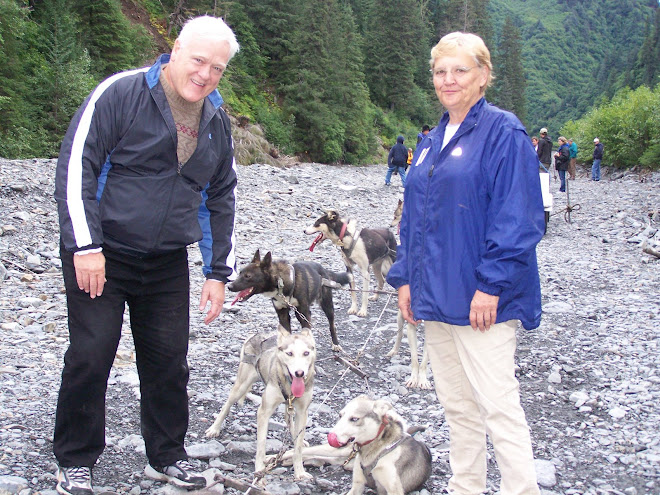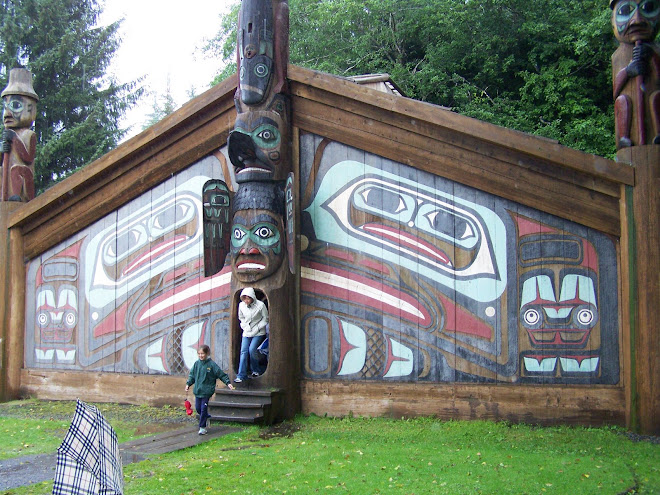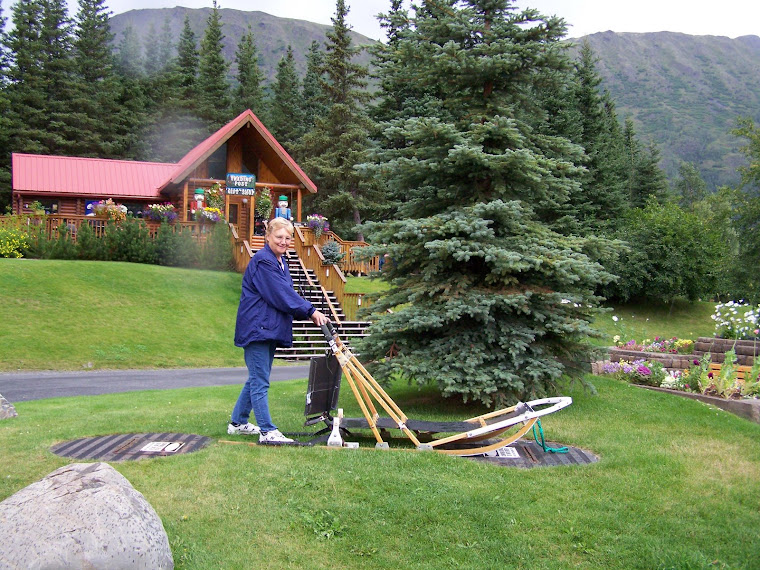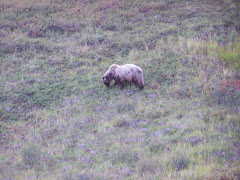
Left: dolphin breaching under our balcony-Inside Passage, BC
This day has been spent at sea, progressing toward a final destination and disembarkation in Vancouver tomorrow, Friday.
We departed Ketchikan last night. When we awoke this morning, we were far out in the Pacific Ocean, out of sight of land. The open ocean waves gave the ship quite a bit of motion, to the point that we swayed and staggered as we walked through the hallways.
Fortunately the ship and its cruise activities mean that one never has to be bored. Each evening we have enjoyed a very entertaining live floor show in the onboard theater. The dining is an experience in itself. In the evening we are served by tuxedoed waiters and offered a full course, gourmet menu from which to choose. There are bingo games and the casino for those so inclined. In addition to the outdoor swimming pools on the top deck, there are indoor, heated swimming pools, whirl pools and jet tubs. The fitness center is very complete, including personal trainers. And there are no shortage of restaurants and lounges, some of which are always open. The views from the ship are wonderful. Our stateroom has a balcony with two deck chairs and a table, where we can watch the sights in privacy, read a novel or enjoy the fruit and snacks that are delivered each afternoon. There is always a crew member standing by to fulfill our every wish.
We entered the Canadian Inside Passage early this afternoon. The waters immediately calmed. We cruised the narrow waterway between beautiful, moist coastal mountains. The towering peaks, ice fields and glaciers are far behind in Alaska. Shortly after entering the passage, we were greeted by dozens of dolphins. A group of half dozen or more broke away from the main group and raced toward us, finally swimming parallel to the ship while rhythmically leaping out of the water in long, graceful bounds. When they reentered the water, we could see their silver grey bodies streaking just under the surface. They finally turned and were gone as quickly as they had arrived. Later we spotted from our balcony spouting whales a few hundred yards away. They were in a pod of at least six. When they surfaced to spout, they would linger on top of the water and raise a black and white fin or fluke: Orcas or Killer Whales.
Looking back on our trip, we saw so many wonderful sights and met so many interesting people. We visited the interior at Denali, toured the Kenai Peninsula with its mountains, harbors and rivers, and visited the historic and picturesque coastal cities from our cruise ship. We met and learned from native Alaskan people as well as others who have come here from the lower forty-eight states to make Alaska their homes. We saw eagles, mountain sheep, moose, bear, caribou, fox, seals, dolphins, salmon and whales, all in their natural, unbounded habitats. We could not help but be awestruck by how vast and remote Alaska is even today; for all our twelve days of travel here, we only saw a tiny fraction of the state.
One of the most interesting aspects of the trip has been interacting with the Tlingit people. They are being tugged by the desire to cling to their roots on the one hand, but be part of the modern American dream on the other. Our Tlingit guide in Hoonah was in the Army for eight years, attended and completed college, traveled the world, but came back to the remote island birthplace of her mother. When I asked her why, she smiled and said “in the end, we all return home”. I didn’t know if she was talking about just herself or all of us. Alaska to me represents the American dream of our ancestors; few boundaries, challenges, self reliance and opportunity. In a way, it was like returning to an earlier version of America. Will my grandchildren have the same opportunity to experience Alaska that I have had? Or will it be sacrificed to progress? Already, cruising Canada’s Inside Passage we see large areas of logging on once pristine Vancouver Island. A metaphor for the struggle of the Tlingits; preserving the past or moving into the future. We feel blessed for the opportunity we have had to see and experience all that we have; for the opportunity to come home to Alaska.








